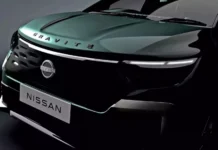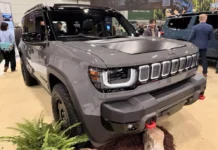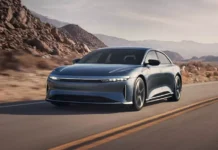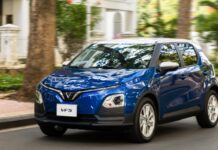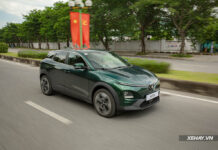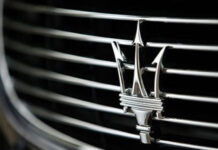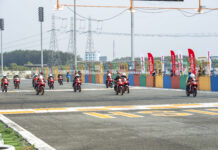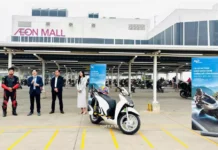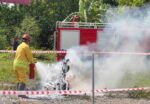Electric vehicle fires are notoriously difficult to extinguish once ignited, posing a significant challenge for automakers. Engineers have tirelessly worked on designing batteries robust enough to withstand collisions without catching fire. However, Chinese innovators have proposed a radically different solution: a high-speed battery ejection system. This system is designed to launch the entire battery pack out of the vehicle in emergency situations.
While this may seem like a groundbreaking safety solution, it appears more like an accident waiting to happen. Consequently, a brief video demonstrating this system in China quickly sparked controversy on social media.
China’s “Battery Ejection” Solution for Electric Vehicle Fires Sparks Debate.
The video shows a large battery pack being forcefully ejected from the undercarriage of an SUV, creating a cloud of smoke. The battery then lands in a pre-prepared area with padding and is covered with a blanket.

The battery pack is ejected from the electric vehicle’s undercarriage.
According to Chinese sources, the system operates similarly to an airbag. Specifically, if a thermal issue is detected within the battery, sensors can trigger the ejection process in less than a second. The battery pack is launched away from the vehicle at a distance of 3-6 meters. The idea behind this system is to protect occupants from the risk of fire or explosion.
After watching the video, many expressed concerns about the safety of this solution. Social media users argue that once ejected, the battery pack could collide with other vehicles, pedestrians, or land in the middle of traffic. A battery weighing hundreds of kilograms cannot be considered harmless when it becomes a projectile. Furthermore, in severe accidents where fires are most likely to occur, vehicle deformation could cause the system to malfunction, leaving both the fire and the battery pack inside the vehicle.
While official details are scarce, labels on the SUV indicate that the test was conducted by the China Automotive Collision Repair Research and Technology Center. The event appears to have taken place during the “Electric Battery Ejection Technology Demonstration and Exchange Conference” on September 19, 2025.
The test vehicle was based on the Chery iCar 03T model. However, the iCAR brand swiftly denied involvement in the experiment. On Chinese social media, iCAR stated: “This is unrelated to iCAR, please remain rational.”

iCar 03T
Ultimately, this “rocket-like battery ejection” system is unlikely to gain traction. Launching a half-ton battery pack onto the road cannot be considered a safety feature but rather a flying hazard that introduces additional risks. In real-world accidents, such an ejection mechanism would almost certainly fail before it could be activated.
South Korea: Electric Vehicle Makers to Disclose Battery Brands Following 140 EV Fires
The South Korean government has recently taken a keen interest in the automotive industry, specifically regarding the types of batteries used in vehicles. In a bid to gain a deeper understanding of this evolving technology, they have requested that auto manufacturers provide comprehensive details on the batteries that power their cars. This move highlights the government’s proactive approach to staying abreast of innovations in the automotive sector and ensuring they have a clear picture of the technologies driving this dynamic industry forward.


